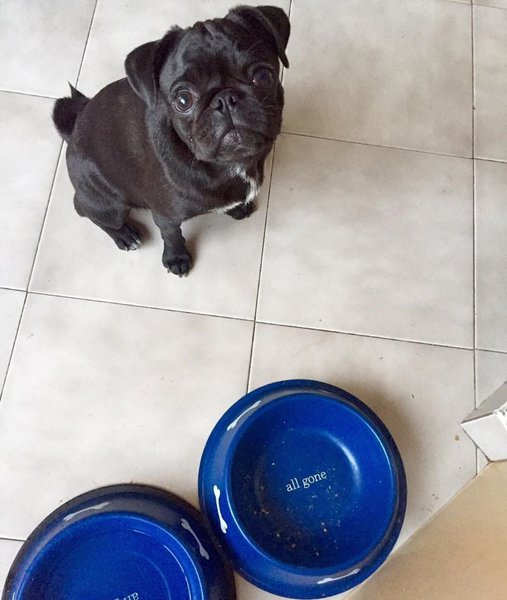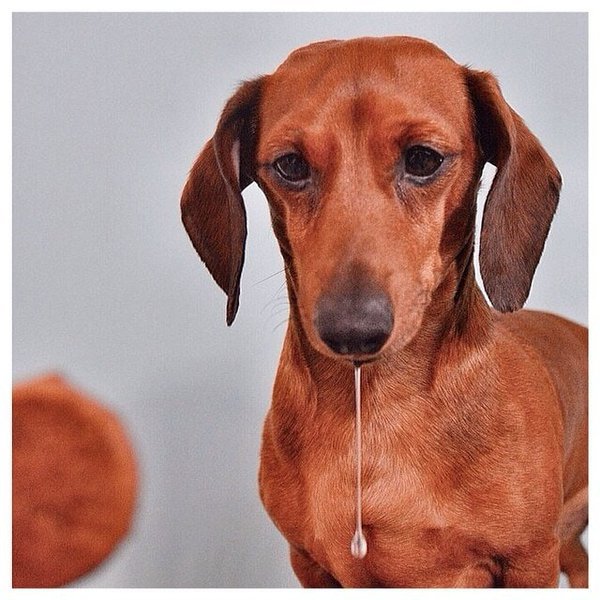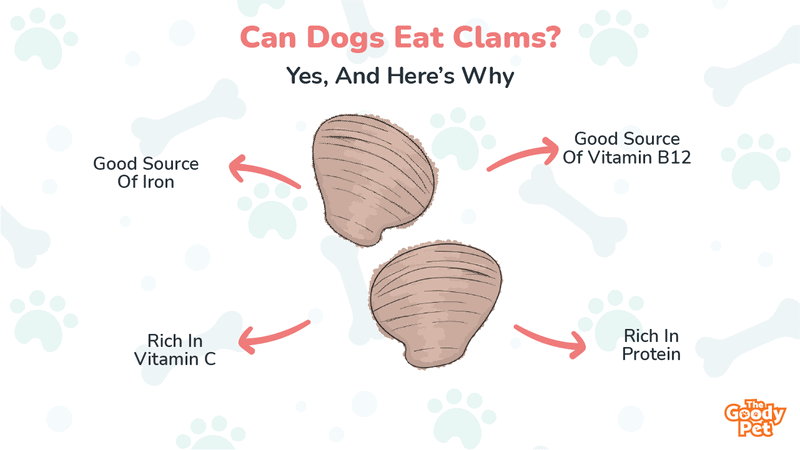If you are a lover of seafood, perhaps you are in a quandary whether it is safe to share a portion of your seafood meal with your fur baby.
Seafood like salmon and clams are safe for your dog to eat. In fact, clams are dense in nutrients like protein and omega-3 fatty acids. And, it is recommended that you gradually introduce clams to your dog to avoid gastrointestinal issues.
But be careful because some dogs may have allergic reactions to a newly introduced food group. So, if your pooch is used to eating beef and all of a sudden, you introduce shellfish like clams, don’t be surprised if your pooch experiences a temperamental tummy such as vomiting and watery stool.
But, of course, you should keep in mind that binging on clams is not a good diet plan for your dog. So with that, we’d focus your attention on why you should give your dog some clams in moderation, the proper way to serve clams, and what are the risks involved if any.
Why You Should Give Clams To Your Dog?

You should and can give clams to your dog, all but on one condition. It is to serve your dog the clam meat only, or shucked clams. If not, the clamshells can only bring harm to your dog.
Also, feeding your dog a few clams won’t cause any health issues, but never overindulge your dog with clams. Keep it to a minimum, as 1 to 2 pieces of boiled or steamed clams should be good enough for your dog.
Though clams may have numerous health benefits but limit these as treats to your pooch. Here are the reasons why it is a good idea to give your dog clams:
Good Source Of Iron
Did you know that clams have a higher concentration of iron than beef liver? Iron is responsible for blood synthesis and helps in the transport of oxygen and nutrients within the organs, muscles, and ligaments of your dog.
The lack of iron leads to a condition known as canine anemia. This, in turn, leads to fatigue, lethargy, darker stools, and ease of bruising.
Good Source Of Vitamin B12
Vitamin B12 plays an important role in the normal functioning of a dog’s nervous and digestive systems. Plus, vitamin B12 is needed for carbohydrate metabolism, cell growth, and protein synthesis.
Rich In Vitamin C
Yes, clams are rich in Vitamin C that aids in removing free radicals in the body. Vitamin C also reduces inflammation and hastens the healing of wounds.
In addition, clams are also good sources of chlorine that prevent Alzheimer’s Disease in dogs. Manganese, known to help regulate the level of blood sugar, is also found in clams.
Potassium, magnesium, calcium, niacin, and essential fatty acids are just some of the other minerals that clams can provide to your dog.
Now that you learned the goodness of this type of shellfish, we’ll now give you tips on how to safely choose clams for your dog. Remember that anything not fresh can result in health problems, one of those is paralytic shellfish poisoning.
So, when choosing clams, here are some of the indicators of freshness:
- Closed shells are good indications that the clams are still alive and suitable to be eaten.
- Should you come across any opened clams, gently tap the clamshells with your finger, they will close up if they are alive.
- The aroma of clams should smell like that of the sea – salty and briny. If not, these clams are no longer fresh.
- Never buy clams with broken shells.
- When going home from the market, avoid transporting the clams in a tightly closed container as restricting air circulation can spoil the clams. Always keep the bag slightly open.
- You can buy canned clams, but make it a habit to check the expiration date.
Are There Risks Involved In Giving Clams To Your Dog?
Yes, even if clams are safe for your dog, there are some issues you need to be aware of such as poisoning, ingestion of heavy metals and clamshells.
Clam Poisoning
Clams belong to the family of bivalve molluscs, meaning, they are filter feeders. This means that clams also eat or absorb noxious substances called dinoflagellates, which, unfortunately, are not destroyed even in high heat.
In case your dog eats clams that have a high concentration of dinoflagellates, your dog will suffer from paralytic shellfish poisoning (PSP). This type of poison is believed to be deadlier than cyanide.
For some, the effects are immediate, while for others, the symptoms are seen 2 to 3 hours after eating clams such as:
- Excessive drooling
- Vomiting
- Unstable walking
- Muscle paralysis

It’s worth noting that these are rare occurrences, and this is why it is safer if you only buy clams from reputable sellers.
Ingestion Of Heavy Metals
Though rare, there is a small probability that the clams that you feed to your fur baby contain unsafe levels of heavy metals.
Clams harvested from waters of the Asia-Pacific region are said to contain heavy metals like mercury. If ingested in large amounts frequently by your fur baby, this can cause damage to its nervous and cardiovascular systems, kidneys, and digestive tract.
Common signs of mercury poisoning can include:
- Abnormal behavior and chewing
- Abdominal pain
- Convulsion
- Tremors, or full body shakes
- Coma
Ingestion Of Clamshells
As we said earlier, one of the things you have to avoid is giving clamshells to your dog.
Depending on the size, small clamshells eaten by your dog would probably be excreted in the stool, so no harm done. However, if the size of the ingested clamshells is large, say the whole clamshell, then this could lead to blockage in the intestinal tract.
Worse, if the clamshells have sharp and uneven edges as this could lead to irritation and damage of the intestinal lining, causing ulcers.
In case you cannot take your dog to the vet clinic right away, soothe your dog’s stomach by giving fiber-rich food like banana and oatmeal. Fiber will allow the stool to soften and increase the chances of the clamshells getting excreted.
How To Give Clams To Your Dog?
First and foremost, to retain the freshness of the clams, soak them in fresh water and store them in cool areas for about 20 minutes. You may also cover the clams in a wet towel and store them in the fridge.
Are you now ready to cook clams for your dog? Be sure to clean the clams first with a firm brush to remove the remaining traces of sand. What are the different ways to prepare clams for your dog? Let’s stir up some nice recipes for your fur baby…
Clams With Liver

Chop up a dime-sized clam for dogs under 50 lbs, whereas for large breed dogs, you can use 2 clams. Add the chopped beef liver and chopped carrots for added flavor.
Be sure to cook well so all the contaminants are eradicated. Give this occasionally to your fur baby mixed with its regular food or with brown rice.
Baked Or Steamed Clams
Chop the clams and then season with parsley and thyme. You may also add just a tiny bit of salt before placing it in the oven until completely cooked.
What About Clam Chowder?
No, clam chowder is not good for your fur baby. It’s because clam chowder is laden with a number of ingredients unsafe for dogs, like milk. A lot of dogs are lactose-intolerant, meaning, they have difficulty digesting dairy products, such as milk and cheese.
Depending on the level of lactose intolerance, the symptoms vary from mild to severe.
Apart from milk, the other ingredients of clam chowder that are toxic for dogs include garlic, onions, and bacon.
What About Clam Juice?
Clam juice is made from extracting juice from boiled clams or steamed clams with salt. Though the juice itself is safe for your dog, the added sodium is the one that makes it bad for your fur baby.
If you wish to give clam juice, we suggest that you avoid the bottled clam juice sold at the supermarkets; instead, you can make homemade clam juice without adding any salt.
What About Clam Cakes, Is It Safe For Your Dog?
No, this is because clam cakes are baked with ingredients like flour, butter, and milk. In case your fur baby ‘intentionally’ stole a slice of your clam cake, observe it.
A small portion would only cause mild gastrointestinal discomfort. But if it ate too much and you see your dog vomit and go through a bout of diarrhea, best to have your dog examined by a vet to prevent dehydration.





